Business Research > ESSAY > Birmingham City Business School BUS6012 Business Operations and Systems: LIDL UK CUSTOMER SATISFACTI (All)
Birmingham City Business School BUS6012 Business Operations and Systems: LIDL UK CUSTOMER SATISFACTION OBJECTIVES, OPERATIONS AND SYSTEMS (18 Pages)
Document Content and Description Below
Birmingham City Business School BUS6012 Business Operations and Systems Assignment 2018 “CITY A.M. AWARDS 2017 Business of the year. With consumers’’ wallets increasingly squeezed, Lidl h... as been dining out on a switch to discount shopping. The German juggernaut, which now has over 670 stores in the UK, leapfrogged Waitrose this summer to become the UK’s seventh-largest supermarket. But its ambitions don’t stop there; Lidl has its sights squarely set on the British middle classes, hitting misconceptions of its food head-on with marketing campaigns about free range poultry and sustainable-farmed mussels”. CITY A.M. 3rd Oct 2017. …………………………………………………………………………………………………………………………………… You may find the information for LIDL UK retailer online, in Keynotes in the Library, Company reports, cases online, and the financial press. The literature sources should be books, journals, refereed papers and appropriate online sources. You should find the sources of information that you will use to deliver the three assessment parts within the first four weeks of the course. This is important and failure to complete this task will jeopardise your performance on the module. Your submission should address the following 3 Parts: Part 1 Using the specific operations performance objectives it can be argued that LIDL UK is focussed on satisfying its customers’ requirements for fast and dependable services at a reasonable market price, through strategic partnerships that assist its customers to improve the services they offer. Specifically you should: • Outline the essential components for ‘effective business operations management’ (creating value for the customer) for LIDL’s operation within the UK. • Use a soft systems methodology to evaluate the issues LIDL UK might face if they decide to introduce hybrid facilities to allow their customers to continue shopping in store, as well as ‘order goods online and have these delivered to the door’ to compete in the market place. Support your discussion with appropriate business operations models (i.e. operation strategy performance (priorities) model, customer value, the service gap model, four v’s profile etc.). TIPS: 1. You should start with what LIDL UK are doing well compare to the sector (why customers shop at LIDL UK). 2. Research the problems they may face changing their business model (going hybrid - the change) using Soft Systems Methodology (critical analysis of need/problem to be solved). 3. Support your discussions with appropriate operations models (quality/depth). • You should compare and contrast different models used by the sector in which LIDL UK operates and recommend appropriate solutions to continue being competitive in the market, make easier for customers to select and buy their products (issues to consider centralised/decentralised inventory and delivery chain, customer value chain, cost implications, sustainability etc.). • Comparison of different solutions with costing and choose one solution to take forward with reasoning. • With reference to the parcel conundrum (http://www.bbc.co.uk/news/magazine-18709348) recommend how LIDL UK should respond to this conundrum (keeping in mind the possible technological and environmental (CO2) impact). 4. Your academic enquiry should lead to synthesis of important issues around the problem and solution. 5. Critical analysis and evaluation of customer’s digital experience, how the new model will enhance the customer’s experience. 6. Innovative ways to serve their customers better. 7. Consider the services which are unique and benefits to LIDL UK. 8. Consider customer value for shopping online and in sore (which market sector are they chasing by changing the business model. 9. Comparison of different solution with costing and choose one solution to take forward with reasoning. 10. Following models not to be included in here Porter or Swot you may use these for your own research. 11. Writing should be essay style (Synthesise) no bullet points, no graphs, no tables or pictures 12. Appendix not allowed. LIDL UK Customer Satisfaction Objectives, Operations and Systems Part 1 Essential Components of Operation Management Challenges Cost of Delivery Issues that Could Arise out of the Introduction of Hybrid Facilities and Online Shopping Methodology: Soft System Models of Business in Lidl UK Sector Solutions to Costing Parcel Conundrum Fig 1: LIDL problem and Solution rich picture Illustration for Root Definition on the Existing System and Processes for LIDL Supermarket The AS-IS and TO-BE Process Diagrams The AS-IS process diagram The AS-IS process shows the current state of LIDL and helps analyse the current state of activities between TO-BE Process Diagram The TO-BE process shows the future state of the business that is expected to take place. It clarifies how the process is going to put together the future state and show how the business will be working in the future. Effective Implementation of the New Process Establish Implementation Schedule Establishing a Cross-Function Coordination Team Ideas for Successful Cross-Function Coordination and Implementation Process Checklist Training the Cross-Function Team to Use On-Strategy to Effectively Manage Their Part of the Plan Balanced Scorecard For The Implementation Of The New Process Company Part 2 For the new system you should include Root Definition, CATWOE and produce a detailed “Rich Picture” (hand drawn) to fully illustrate your answer. Your rich picture must indicate the problems well as the solution. (Not included in the word count). By means of a Business Process Plan (BPP) illustrate the changes including “AS IS” and “TO BE”. Brief explanations of both plans are required and support your discussions with relevant literature. You must follow the Business Process Management (BPM) standards covered in the class. Part three is the implementation of the new process (“TO BE”); failure not to include the BPP may result in marks not awarded for part three. (BPP not included in the word count). Tips: Structure for part two: 13. Rich picture (fully illustrating part one, the problem and the solution). 14. Root Definition (based on your chosen solution). 15. Table for CATWOE (this is to test the Root Definition). 16. “AS IS” process plan (include brief summer of the process plan). 17. “TO BE” process plan (include brief summery to explain the process plan) 18. Include these in the body of the assignment (follow the assignment structure) Part 3 Discuss how the managers would turn performance objectives into operations priorities and the resources that would be necessary for effective implementation of the new process (“TO BE” business process plan). (About six hundred words). Tips: 19. This part should concentrate on the new solution only as discussed in part one and two. 20. Analyse the resources required and costs for implementing the new process (“TO BE” Business Process Plan). 21. Support your discussions with Performance Model, management of change etc. (not Maslow). Using a Balanced Scorecard, discuss how the business performance can be measured post implementation (refer to the last three years of company annual reports and any other relevant data for improvement and target trends for LIDL UK). (Balanced scorecard charts are not included in word count but discussion on each prospective is included, about hundred words for each prospective). 22. Balanced Scorecard is to measure the post implementation performance for the new process only. 23. Create Table for each prospective. 24. Under each table use the words to support your data, reference for the sources etc. Your work should be referenced including in text referencing with appropriate literature and form a logical and concise discussion. References Arnett, D. B., & Badrinarayanan, V. (2005). Enhancing customer-needs–driven CRM strategies: Core selling teams, knowledge management competence, and relationship marketing competence. Journal of Personal Selling & Sales Management, 25(4), 329-343. Atkinson, Helen. "Strategy implementation: a role for the balanced scorecard?." Management Decision 44, no. 10 (2006): 1441-1460. Chen, Haozhe, Daniel D. Mattioda, and Patricia J. Daugherty. "Firm-wide integration and firm performance." The International Journal of Logistics Management 18, no. 1 (2007): 5-21. Discounters Go Digital: How Can Aldi and Lidl Tackle Grocery E-Commerce? (2016, December 8). Retrieved March 14, 2018, from https://www.fungglobalretailtech.com/research/discounters-go-digital-can-aldi-lidl-tackle-grocery-ecommerce/ Frederick, D. (2011). Online Shopping – a New Shopping Trend (an Opinion Study). Indian Journal of Applied Research, 3(11), pp.60-62. Guth, William D., and Ian C. MacMillan. "Strategy implementation versus middle management self‐interest." Strategic Management Journal 7, no. 4 (2006): 313-327. Hines, Peter. "Purchasing for lean production: the new strategic agenda." Journal of Supply Chain Management 32, no. 4 (1996): 2-10. Hrebiniak, Lawrence G. "Obstacles to effective strategy implementation." Organizational dynamics 35, no. 1 (2006): 12-31. Liu, C. and Forsythe, S. (2010). Sustaining Online Shopping: Moderating Role of Online Shopping Motives. Journal of Internet Commerce, 9(2), pp.83-103. Nicholson, J. V., & Phillips, S. (2016, December 13). UK Supermarket Chain Profiles 2016. Retrieved March 14, 2018, from https://gain.fas.usda.gov/Recent%20GAIN%20Publications/UK%20Supermarket%20Chain%20Profiles%202016_London_United%20Kingdom_12-13-2016.pdf Peng, Wei, and David Litteljohn. "Organisational communication and strategy implementation–a primary inquiry." International Journal of Contemporary Hospitality Management 13, no. 7 (2001): 360-363. Raps, Andreas. "Strategy implementation–an insurmountable obstacle?." Handbook of business strategy 6, no. 1 (2005): 141-146. Research and Markets: Lidl Case Study: Responding to Consumer Needs in the Discount Retail Sector.. (n.d.) >The Free Library. (2014). Retrieved Mar 13 2018 fromhttps://www.thefreelibrary.com/Research+and+Markets%3a+Lidl+Case+Study%3a+Responding+to+Consumer+Needs...-a0188568849 Roux, L. and Donaldson, C. (2004). Economics and Obesity: Costing the Problem or Evaluating Solutions? Obesity Research, 12(2), pp.173-179. Selen, W. and Soliman, F. (2002). Operations in today’s demand chain management framework. Journal of Operations Management, 20(6), pp.667-673. Spary, S. (2014, November 6). Retail disrupter: how 'classless' Lidl took on the supermarkets and won. Retrieved March 14, 2018, from https://www.campaignlive.co.uk/article/retail-disrupter-classless-lidl-took-supermarkets-won/1320453 [Show More]
Last updated: 2 years ago
Preview 1 out of 18 pages

Buy this document to get the full access instantly
Instant Download Access after purchase
Buy NowInstant download
We Accept:

Reviews( 0 )
$19.00
Can't find what you want? Try our AI powered Search
Document information
Connected school, study & course
About the document
Uploaded On
Apr 20, 2020
Number of pages
18
Written in
Additional information
This document has been written for:
Uploaded
Apr 20, 2020
Downloads
0
Views
201



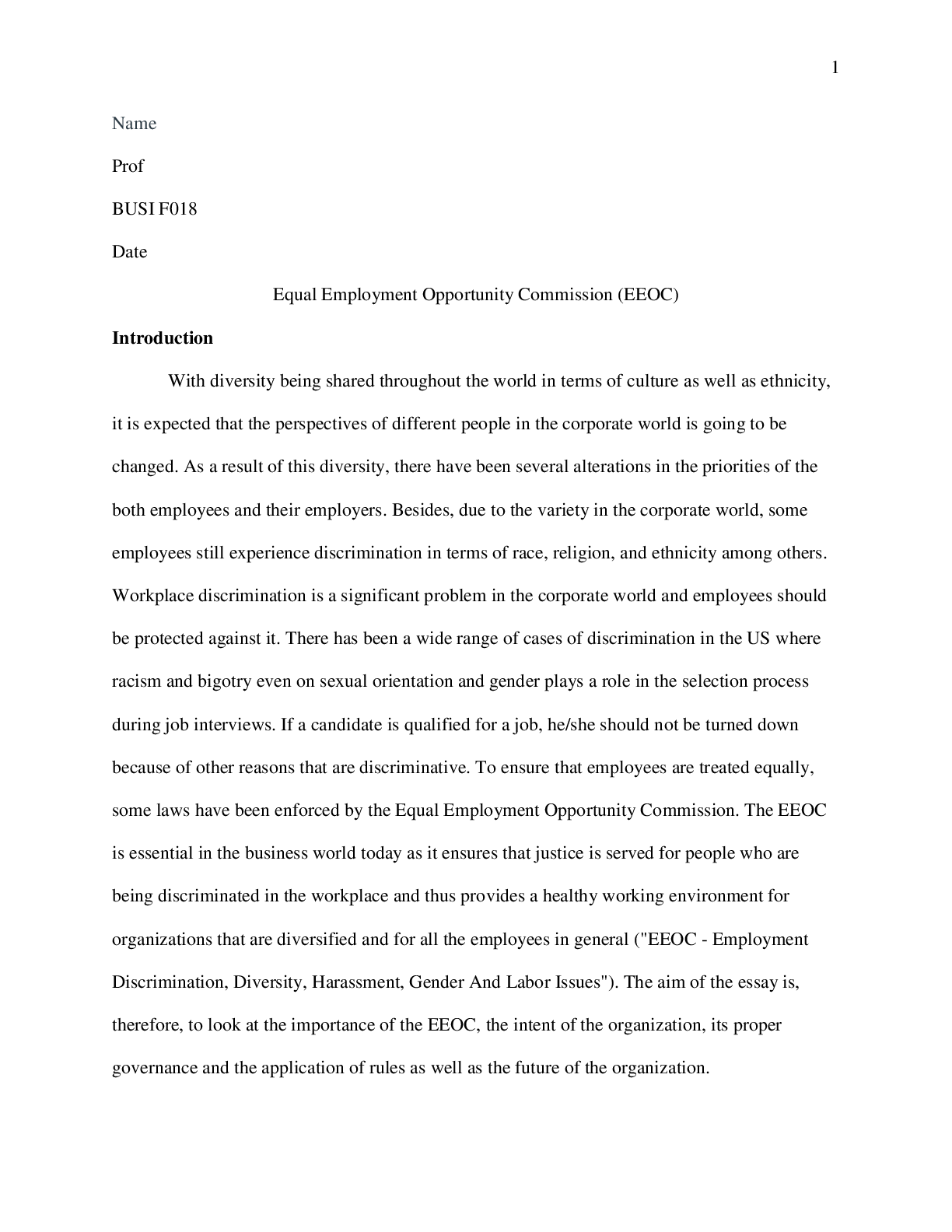
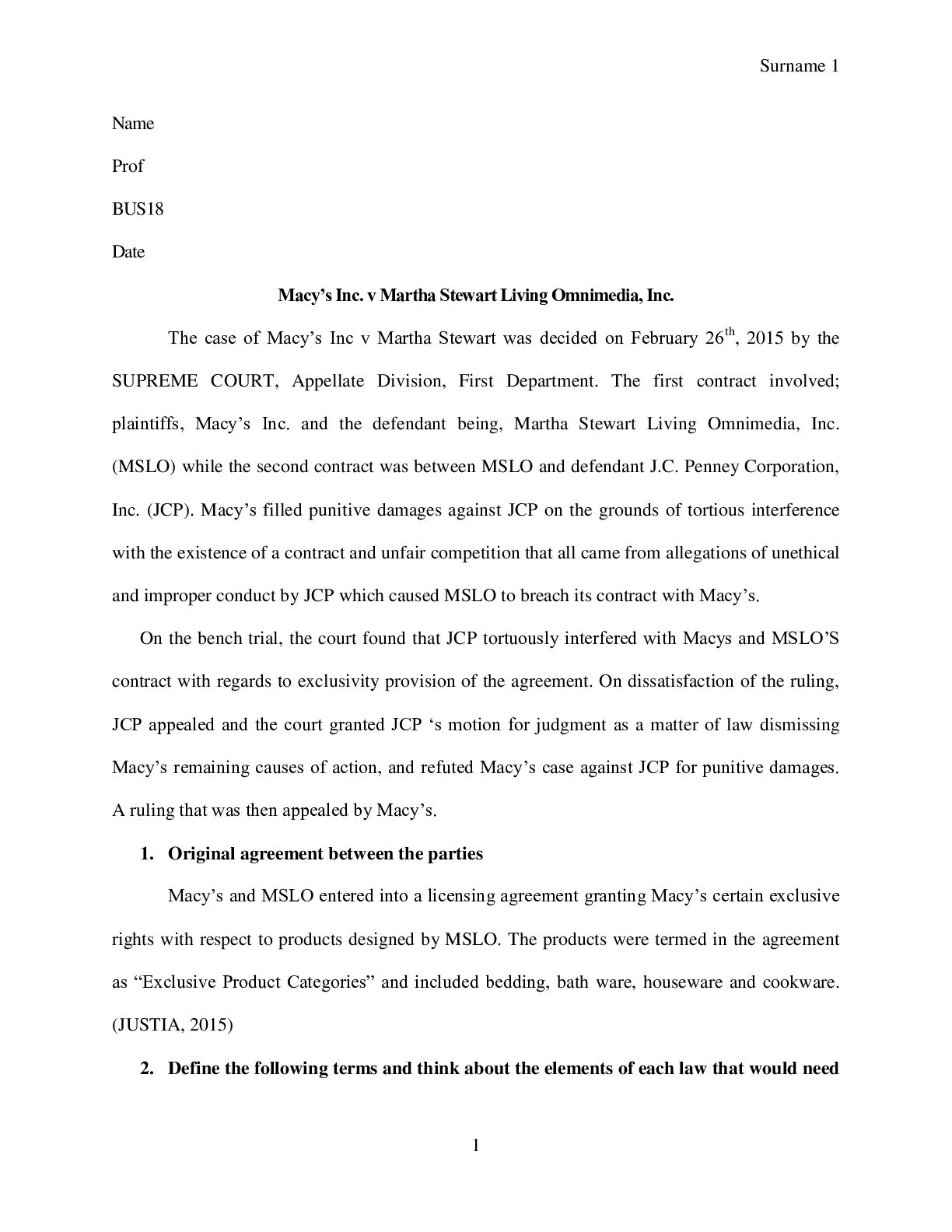

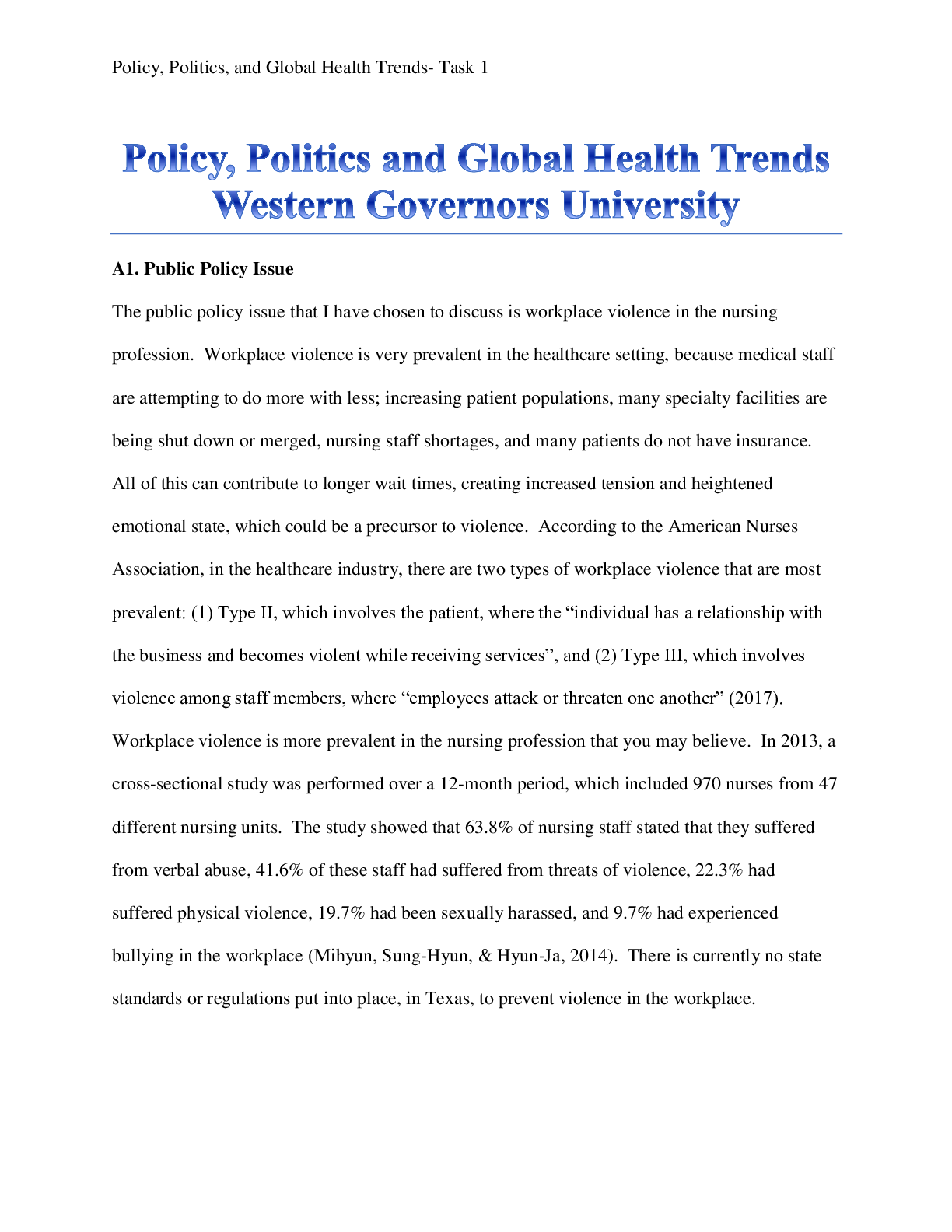
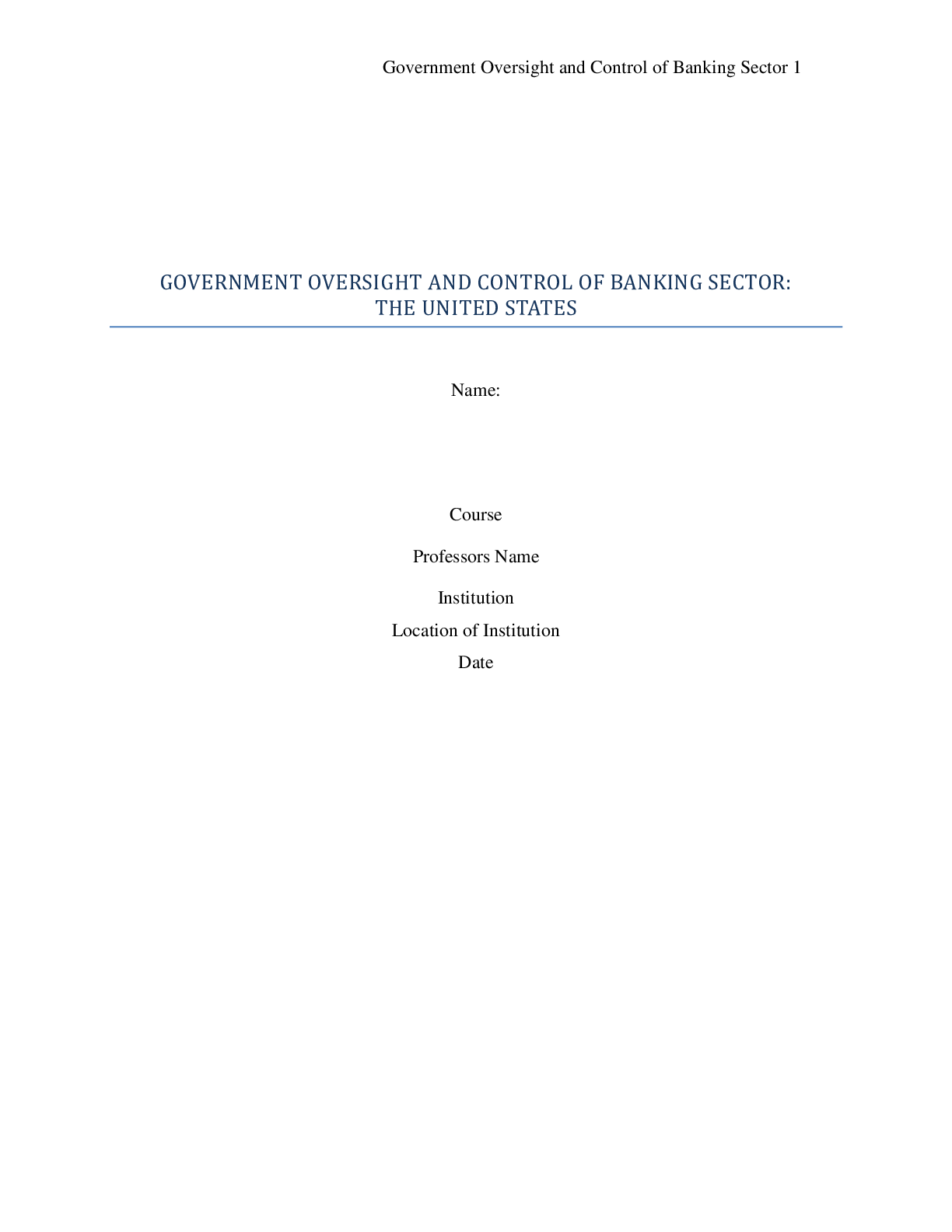

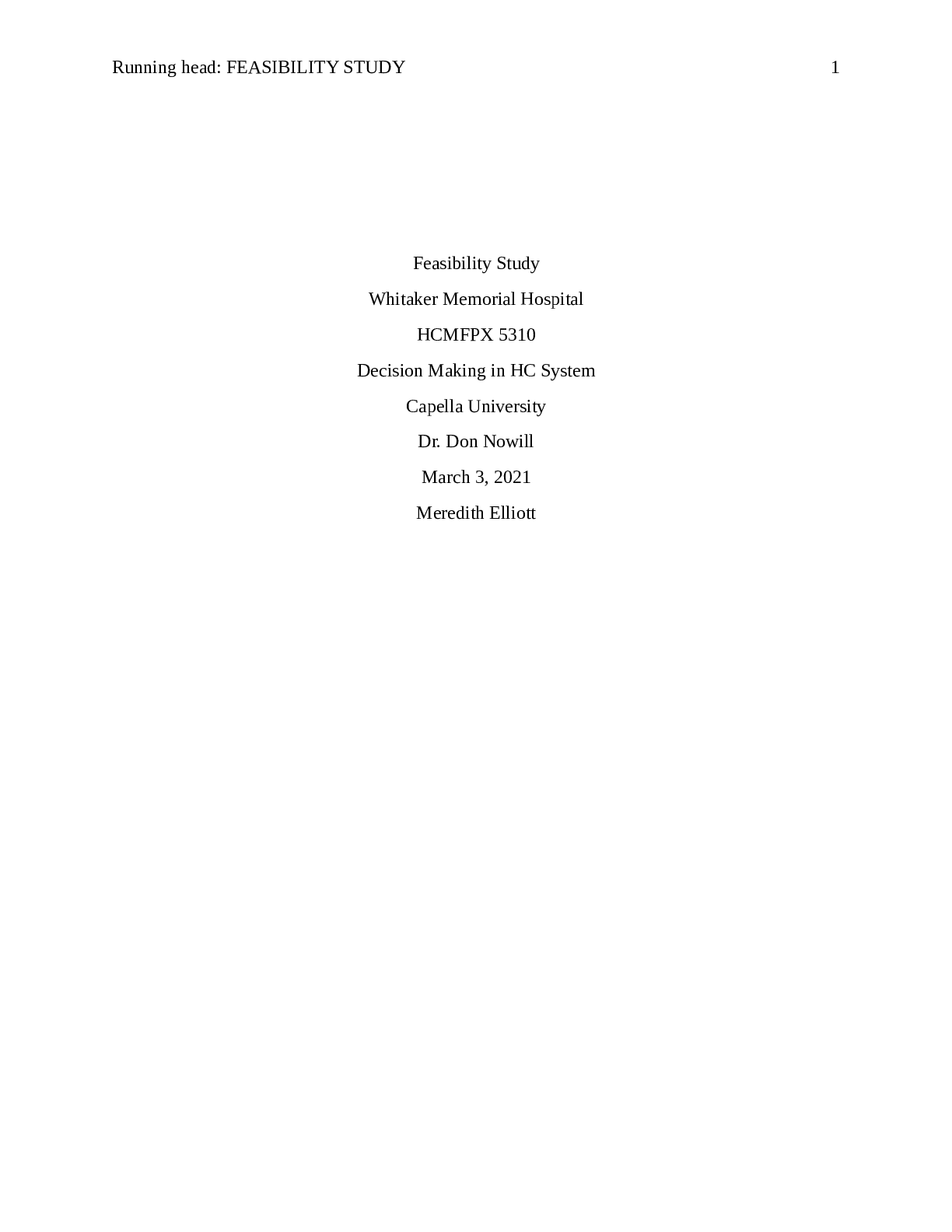


.png)

